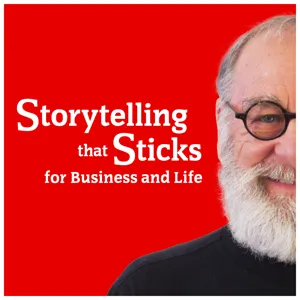- Emotion is the Fast Lane to the Brain
How do you use emotion artfully and gracefully? It’s tricky. You don’t want to be manipulative and gratuitous, but at the same time you want to make an emotional connection with your listener, client, or audience member. Without emotion, your presentation will be like a black and white movie. With emotion, it will be in Imax, 3D, high-definition color.
As an actor, I learned to harness the power of emotion in my performances. I knew where and when to employ the emotion that served the moment. When I started telling stories in keynotes, it was natural to use the same instincts to to make my stories come alive with emotion. My audiences loved it and told me so by hiring me over and over. I perfected the methodology that I am teaching in this podcast in front of hundreds of corporate and association audiences over 25 years.
The secret to giving a great speech or telling a powerful story is simple: make them laugh, cry and think. If all you do is make them think, you’ll join the ranks of smart but forgettable speakers.
You can learn how to use emotion in your stories and speeches. First, you need to identify the emotional moments in your story and then you need to know what to do with them. In this episode, you’ll learn the following:
- Why it’s essential to trigger an emotional response in your listener or audience member
- How you can trigger an emotional response with some simple presentation techniques
- Where the emotional moments in your story live so you won’t skip over them
In this episode, I refer back to The Nine Steps of Story Structure from Episode Three. The Nine Steps are foundational to everything I teach. If you haven’t listened to that episode, I suggest you go back and start with Episode One.
In addition to listening to this podcast, hop on over to You Tube where you can watch instructional videos, my Authors at Google keynote and my TEDx talk.
I’d also like to hear from you with your questions, comments and suggestions. What country are you dropping in from? What is your interest in storytelling? What have you learned so far that you’ve put into practice?
To get in touch with me, email: doug@dougstevenson.com
